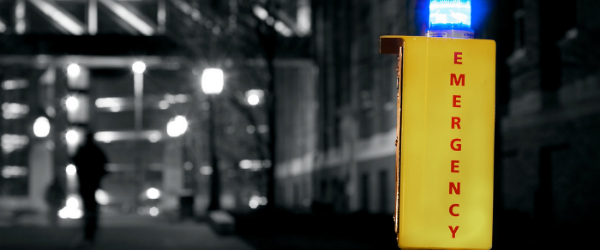| Calgary's Emergency Operations Centre |
My presentation was in three parts:
- the what: roles and functions of the emergency info officer or EIO
- the why: the context .... the impact social convergence is having on the EIO's role
- the how: how to meet the new expectations ... crisis comms planning and technique
Preparing for the sessions and engaging in discussions with CEMA staff and others who attended my talk, led me to some thinking about how those who have to communicate with the public during an emergency, must now approach their work.
- Let's call ourselves EIOs and not PIOs ... Emergency Information Officers instead of Public Information Officers ... PIO evokes PR too much ... Although positioning a response to a disaster under the best possible light is critical ... we're not doing PR ... our role is OPERATIONAL ... hence my preference for the EIO designation.
- Social convergence is the most important thing to happen to the EIO's world in ... pretty much forever .... in a nutshell ... think social + mobile in your planning ....empower your organization to become its own broadcaster during an emergency.
- the coordination aspect of the EIO role is the MOST important function ... don't get distracted by writing news releases and the such ...focus on coordinating with other stakeholders/agencies and developing key messages
- speed is everything ! heck, speed is the only thing ... yes, you must validate the info! but don't take too long doing so ....move at the speed of your audiences (speed of social networks) ... and use mobile tech to reach them ... or you won't even be part of the conversation ...people will get the info from somebody else ...
- Mobile is where the game is ... adaptive website, mobile apps ... alerting tools ... when more and more people are leaving legacy media behind ... mobile becomes their lifeline (and yours too ! )
- the era of simply pushing out info in an emergency is dead ! but ... and it's a big but ... conduct social listening to gather situational awareness ONLY if you can transform social data into VALUABLE INTEL to support command/decision-making ...otherwise it's just noise ... related: the focus should be on the intel/reporting to command and not the tech itself
- rumour management is now a CRITICAL concern for EIOs (and any Joint Info Centre) during an emergency ... btw ...how can you combat misinfo and rumours that might threaten public safety/health ...if you're not listening on social networks ?
- crisis comms planning is the only effective way to be able to occupy the public space within minutes of the onset of any incident ... message mapping is key to that approach ... messages developed with social convergence (think Twitter and 140 characters) in mind .. every response plan should have a crisis comms plan linked to it.
- No wall flowers ... EIOs must realize they are part of command ... they must be heard and bring to the I/C or EOC manager/director ... the changing comms environment ... when many EM experts still fret about social convergence .... EIOs need to make the point as clear as possible about the absolute necessity of social in any response ... this might include involving digital volunteers ...
- I have no clue how the EIO role is going to continue to evolve ... all I can do is keep learning ... keep track of how our audiences get their info ...and where ... how they share info ... how they alert each other of impending crises ... and try to insert our messages into their conversations ...
Keep learning my EIO colleagues !

